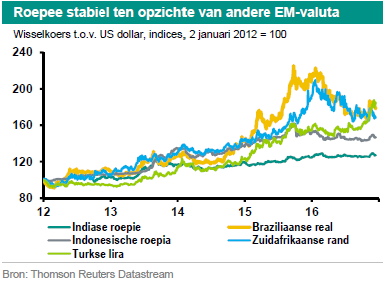
You can learn how businesses function and what makes them a good, or bad, investment opportunity. According to the terms in our example above, 36.73% is the cost of not taking the discount. The articles and research support materials available on this site are educational and are not intended to be investment or tax advice. All such information is provided solely for convenience purposes only and all users thereof should be guided accordingly.
- Trade discounts are what make it possible for resellers and distributors to operate.
- There are many types of discounts that businesses use to incentivize customers.
- Trade discounts can benefit suppliers by increasing sales volume, reducing inventory costs, and attracting and retaining customers.
- The term, “discount,” means a deducted amount from the normal price of an item or service.
- You can calculate the annualized cost of missing a trade credit discount using a simple formula.
- It is essential to note that businesses do not create a new “trade discount account” to post the transaction in the books of accounts.
Single trade discounts are commonly known as “one-off” discounts that your business offers to customers or clients when their purchases meet a specific condition that would trigger that discount. The condition is one that you set but it can include buyers who pay in cash, buyers who purchase in bulk or buyers who make purchases during a specific promotional time period. For example, if you run an automotive parts business, you could offer a retailer a 10 percent discount if the retailer orders $30,000 or more worth of merchandise. This is a one-off because the discount only applies if the retailer can meet the specific condition that you’ve established. The supplier and customer negotiate the discount rate or amount, eligibility criteria, and specific goods or services covered. When the customer completes a purchase, the trade discount gets applied, resulting in a reduced selling price.
Trade Discount: The Complete Guide [+ Examples]
While trade discounts can be beneficial to both suppliers and customers, there are some limitations to consider. In order to calculate a trade discount, both the original list price of the product and the trade discount percentage must be known. The trade discount is then calculated by multiplying the list price by the decimal form of the trade discount percentage. In this example, company ABC would need to purchase at least 10,000 units per month to receive the 15% trade discount.

The seller deducts the discount from the list price and then records the final selling price to book the sale/purchase of goods in the books of the manufacturer/wholesaler. Trade discounts get negotiated individually or through contracts and are typically offered to specific customer segments. Cash discounts are a part of invoices or sales agreements and are available to all customers who meet the payment terms. Trade discounts are predetermined and based on quantity or value, expressed as a percentage of the list price.
How Trade Discounts Benefit Resellers
It is a negotiated discount that gets agreed upon between the supplier and the customer, typically for business-to-business (B2B) transactions. Companies do not disclose trade discounts as a part of their accounting and financial reporting. Instead, it would provide the products to the wholesalers and retailers at higher prices or full retail prices, to account for the cost of distribution.
ABC Ltd. has a discount series of 10%/2%, where a discount of 10% is if a buyer purchases $300 and above, and a discount of 2% is if the buyer makes the payment within 7 days. Calculate the discount if the buyer buys products worth $500 and pays within 7 days. Calculate the trade discount and the net price Carl&Co pays if the desk’s list price is $150. Even though trade discounts can be recorded in the daily purchase and sales books for bookkeeping needs, there is no separate journal entry made into the general ledger for accounting purposes. Trade discounts do not become a part of the financial statements, as they are a reduction in the list price.
Cost of credit formula
The more business you do with a supplier, the better your negotiating position will be with regard to the terms of trade credit. It may say that 1-to-100 units are $5 per unit, while 101-to-200 units are $4 per unit which equals a $1-per-unit trade discount. The following examples will provide sample calculations demonstrating the utilization of the trade discount formula. Moreover, the manufacturer gives this discount usually when the buyer purchases the product in bulk.

One of the most effective strategies is to offer trade discounts and discount series. Businesses often offer a variety of discounts to customers to encourage purchases of products or to encourage volume purchasing as well as to incentivize customers to make payments on time. You can structure your discounts in a number of ways but trade discounts and discount series are time-tested and effective means of boosting revenue. The trade discount may be stated as a specific dollar reduction from the retail price, or it may be a percentage discount.
Company
A shipping company decides to begin offering a trade discount to its corporate customers that ship a high volume of packages. The trade discount is based on the number of packages shipped per month. The company decides that any corporate customer that ships over 10,000 packages per month will receive a 5% trade discount. Here, we calculate the discount as many times as many discounts the seller is giving.
Company A is a manufacturer who does not sell to end-consumers but only to wholesalers, distributors, retailers and other resellers. The cost of credit inherent in these terms is quite an attractive rate, so the controller elects to pay the supplier’s invoice trade discount formula under the early payment discount terms. Picture a situation where a biopharma makes a particular drug for treating a specific health condition. The listed price for the complete dose of the medicine is $100 as per the manufacturer’s indicated retail price.
They may be able to sell a larger volume of product at a lower price when they offer a trade discount. For example, imprinted tote bags for a trade show might cost $1.12 each for 250-to-499 units, but only 97 cents for 500-to-999. Also, a seller who buys a large number of items might be able to demand a lower price to continue doing business with the manufacturer. A trade discount is a reduction in the list price of a product or service offered to a customer by a supplier. It differs from other forms of discounts such as cash discounts, quantity discounts, and promotional discounts because it is negotiated between the supplier and the customer.
Typically, the discounted price is subtracted when the item is purchased and the invoice is created. As a business owner, you are always on the hunt for ways to attract more customers who will remain loyal buyers for many years. But there are different strategies you can implement to achieve this goal. Some businesses choose a low-price, high volume strategy, while other businesses target high-income customers by offering exclusive products.
Trade discount is a pricing strategy manufacturers/wholesalers use to incentivize bulk purchases by their customers (retailers and resellers). The discount is a percentage deduction from the list price of a product that the seller grants when the buyer purchases a large quantity. The idea is that the more products a customer buys, the greater the discount they will receive, encouraging them to buy even more products in the future.
- The condition is one that you set but it can include buyers who pay in cash, buyers who purchase in bulk or buyers who make purchases during a specific promotional time period.
- Since a trade discount is deducted before any exchange takes place, it is not part of an accounting transaction that would give rise to a journal entry into the accounting records of an entity.
- A trade discount is the amount by which a manufacturer reduces the retail price of a product when it sells to a reseller, rather than to the end customer.
Suppose a supplier offers a 10% trade discount on a product with a list price of $100. The trade discount would be $10 (10% of $100), which means the customer would pay $90 for the product. Cash discounts are offered to customers who pay for their purchases in cash or within a specified period.
For example, Company A sells a widget to Corporation Z. Company B invents a new version of the widget and wants to convince Corporation Z to switch suppliers for the widget. They might offer to sell the widget to Corporation Z at a 40-percent discount if they are the exclusive vendor for the widget. By following these practices, suppliers, and customers can maximize the benefits of trade discounts and improve their bottom line.
Car Ratings Car Shopping Guides How Does A Car Dealership … – J.D. Power
Car Ratings Car Shopping Guides How Does A Car Dealership ….
Posted: Wed, 07 Sep 2022 07:00:00 GMT [source]
In contrast, cash discounts apply after the invoice and depend on prompt payment. Manufacturers need to be very careful in setting clear terms for discounts and moderating discount levels. Agreeing to steep discounts can put manufacturers at an imposition in the event a reseller finds new leverage. The key is understanding exactly how much it costs to produce a product and the minimum viable margin for selling it. When opening a business, you must pick suppliers not just for the physical products they can offer, but also for their performance record and their terms of trade credit. Small businesses generally use trade credit, or accounts payable, as a source of financing.













